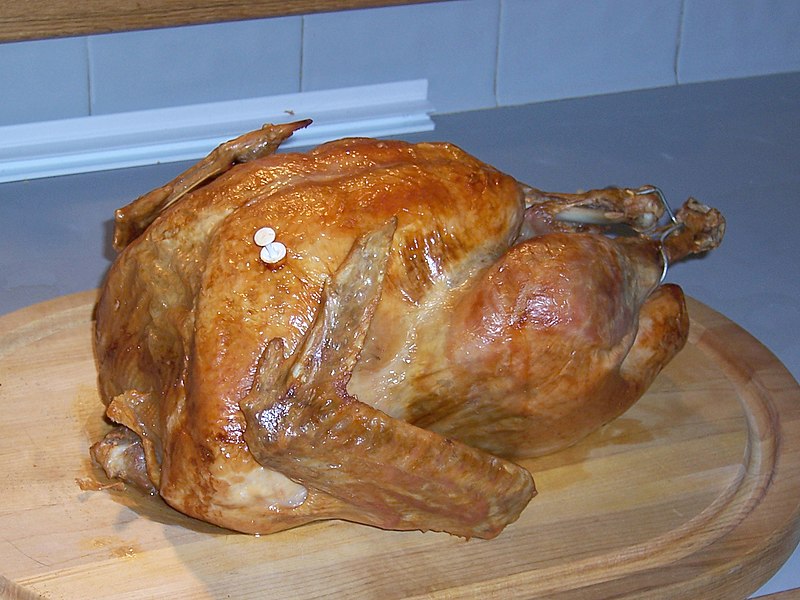The Wild Turkey is the largest of the 2 extant turkey species (the other being the Oscillated Turkey of S. America). There are around six recognized subspecies (nominate South Mexico M. g. gallopavo, Gould's M. g. mexicana, Eastern M. g. silvestris, Florida M. g. osceola, Merriam's M. g. merriami, and Rio Grande M. g. intermedia) and a variety of domestic breeds including the somewhat pitiful breed most Americans will be carving up this Thanksgiving. Turkeys are classified in the order Galliformes, which includes the other chicken-, grouse- and pheasant-like birds. In the past turkeys belonged to their own family (Meleagrididae), but recently they've been deemed more closely related to the grouse and pheasants lumping the three previously distinct family groups into the family Phasianidae.
Figure 1: Two male Eastern Wild Turkeys doing a courtship display.
Figure 2: The completely unrelated Turkey Vulture, here regally poised atop
a decaying deer carcass (for your post-Thanksgiving-dinner pleasure).
Turkey's received their common name from their early arrival to Europe, when they were imported to Turkey from the new world. They became know as "Turkey Fowl" on the market, and as Europeans moved to the Americas, the name stuck. In spanish many call turkey pavo, likely from early European confusion with Peafowl (genus pavo), and in parts of Central American and Mexico turkey are known commonly by their Nahuatl name of guajolote.
Turkey are conspicuous birds, and not surprisingly hold a place in U.S. history. Aside from the Thanksgiving tradition, there is also Benjamin Franklin's rather famed criticism of the Bald Eagle as our national emblem. In a 1784 letter to his daughter Sarah, he compares a few other birds with that "bird of bad moral character", the eagle - including the Wild Turkey.
For in truth, the turkey is in comparison a much more respectable bird, and withal a true original native of America. Eagles have been found in all countries, but the turkey was peculiar to ours; the first of the species seen in Europe, being brought to France by the Jesuits from Canada, and served up at the wedding table of Charles the Ninth. He is, besides, (though a little vain and silly, it is true, but not the worse emblem for that,) a bird of courage, and would not hesitate to attack a grenadier of the British guards, who should presume to invade his farmyard with a red coat on.










